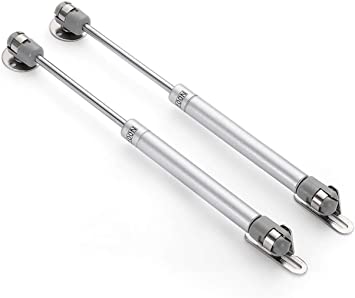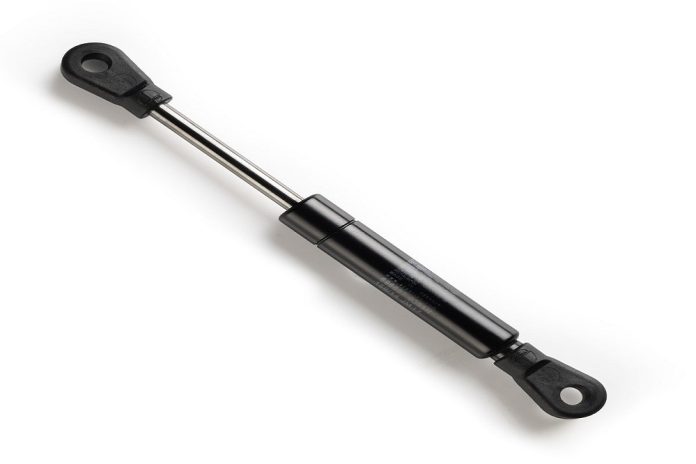Gas struts are versatile hydraulic-pneumatic lifting mechanisms that combine gas and liquid components to help lift, lower, and support heavy or awkward objects with ease. Commonly found in various door hardware setups, their applications extend far beyond, making them indispensable in many industries. Everyday uses of gas strut brackets include adjustable car seats, table supports, easy-to-open hatches, panels, and even in small electronic devices.
As the name suggests, these brackets rely on pressurized gas along with oil-based lubricants to assist or counteract external forces. The compressed gas offers a controlled way to store and release energy, resulting in smooth, damped movements transmitted through sliding pistons and rods. While terms like gas springs, cylinders, and dampers are often used interchangeably, they refer to specific types or applications: standard gas struts support objects during movement, gas dampers control or limit movement, and damping gas springs combine both functions.

How Do Gas Strut Brackets Work?
Gas strut brackets operate much like ultra-rugged bicycle pumps but are filled with pressurized nitrogen gas and a special petroleum-based lubricant, sealed tightly to prevent any leakage. The pressurized gas stores energy, while oil slows the piston movement and provides essential lubrication. Inside a gas strut, a snug piston attached to a rod slides back and forth within a sealed cylinder. When you push the piston rod into the cylinder, the gas compresses, storing energy. Releasing the pressure allows the compressed gas to push the piston rod back to its original position. Unlike a bicycle pump, the gas within the cylinder can flow around or through the piston via small holes or valves designed to control this movement.
Though it might seem the gas is not compressed because it flows around the piston, the sealed cylinder’s design ensures the gas is compressed by the volume displaced by the piston rod. When fully retracted, the gas pressure inside can reach about 170 times atmospheric pressure. This high pressure provides the force necessary for smooth and reliable operation of the gas strut.
Now that we have explained the inner workings of workings of gas strut brackets, let’s explore some essential do’s and don’ts related to gas strut brackets to maximize their lifespan and performance.
Gas strut brackets should ideally be used in pairs to avoid side loading, which can cause premature wear or failure. They must be mounted with the piston rod pointing downward to ensure the seal remains lubricated properly. Avoid applying solvents or any chemical cleaners to gas struts as they can degrade the seals. Similarly, never paint gas struts to prevent paint transfer to the piston rod, which could impair its smooth operation. Additionally, do not apply grease or other substances to the piston rod as this can cause it to stick or fail during cycling.
By adhering to these guidelines, you can safely integrate gas strut brackets into various applications, prolonging their effectiveness and ensuring smooth, reliable operation in daily use.
Beyond traditional applications, gas struts are increasingly used in innovative fields such as renewable energy installations, medical equipment, and advanced robotics, where precise control of motion and reliable dampening are crucial. Their adaptability and efficiency make them vital components in modern technology solutions, driving demand for customized gas strut designs tailored to specific industrial and consumer needs.
If you want to learn more about Curtains and Blinds, please visit our Interior Design category for comprehensive resources and expert insights.
























